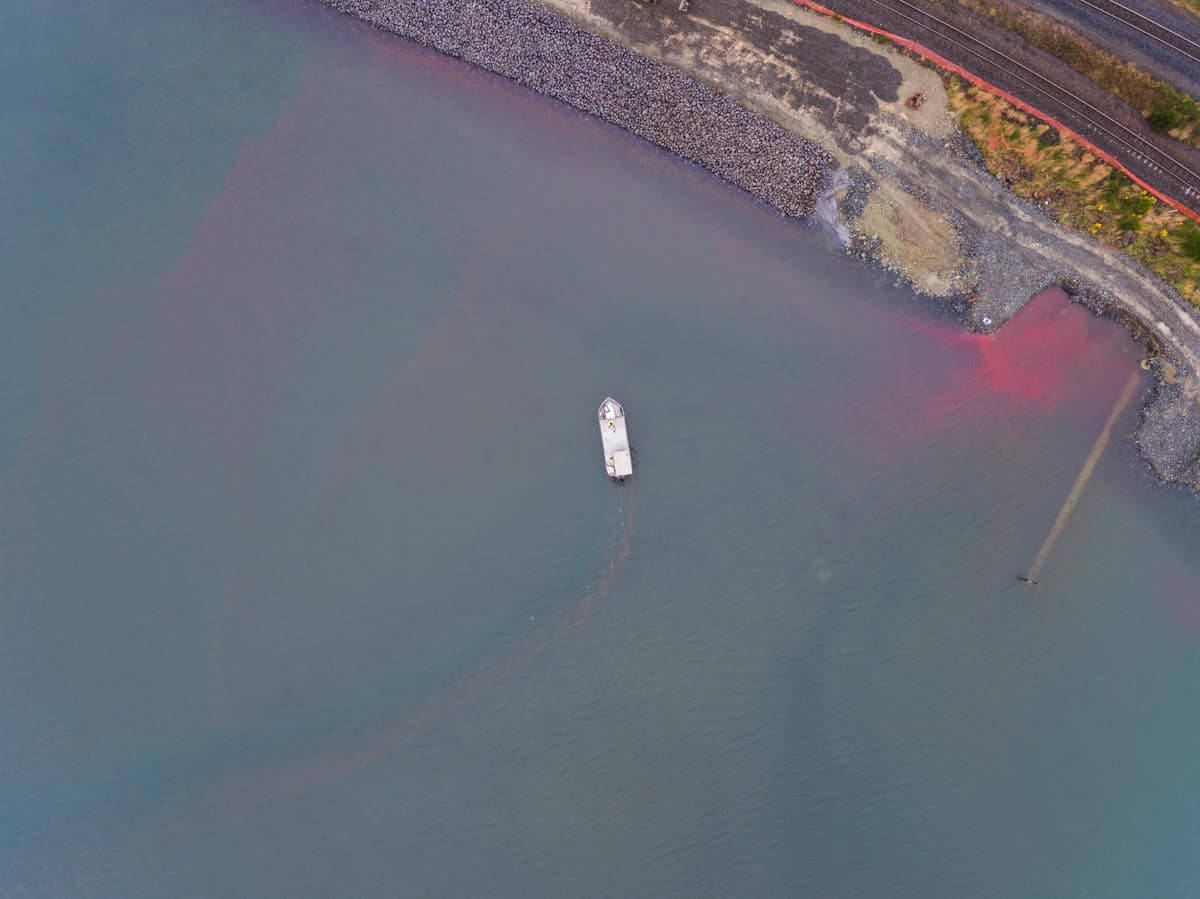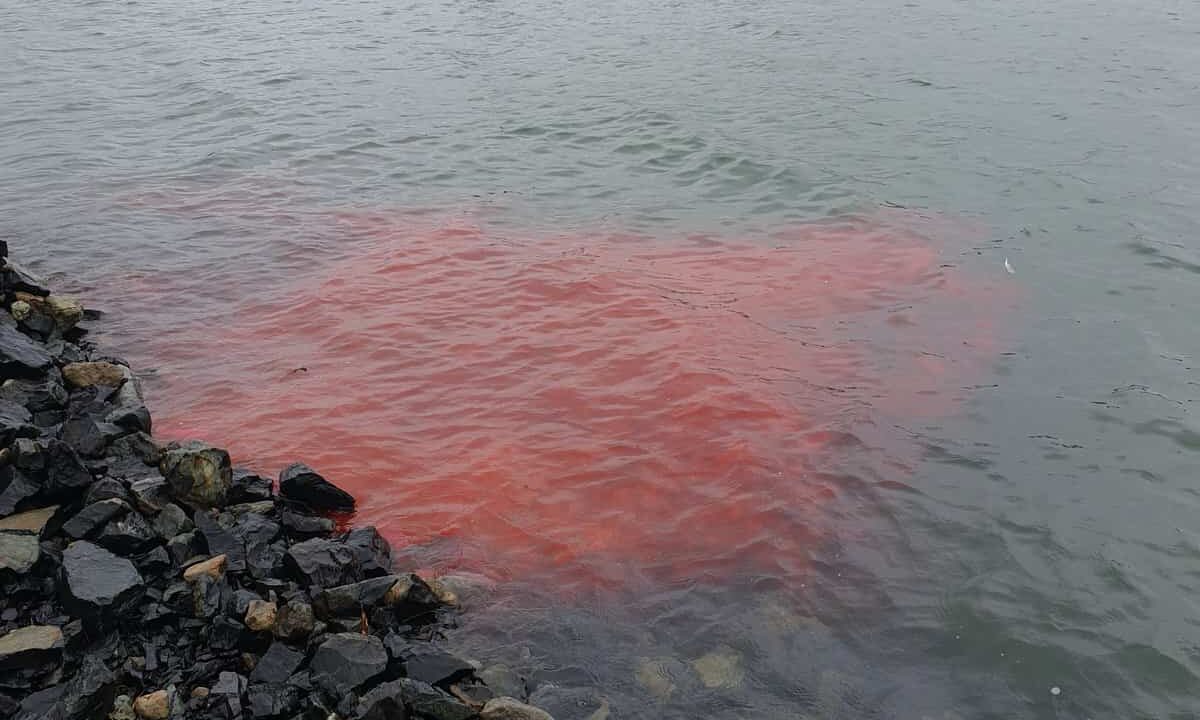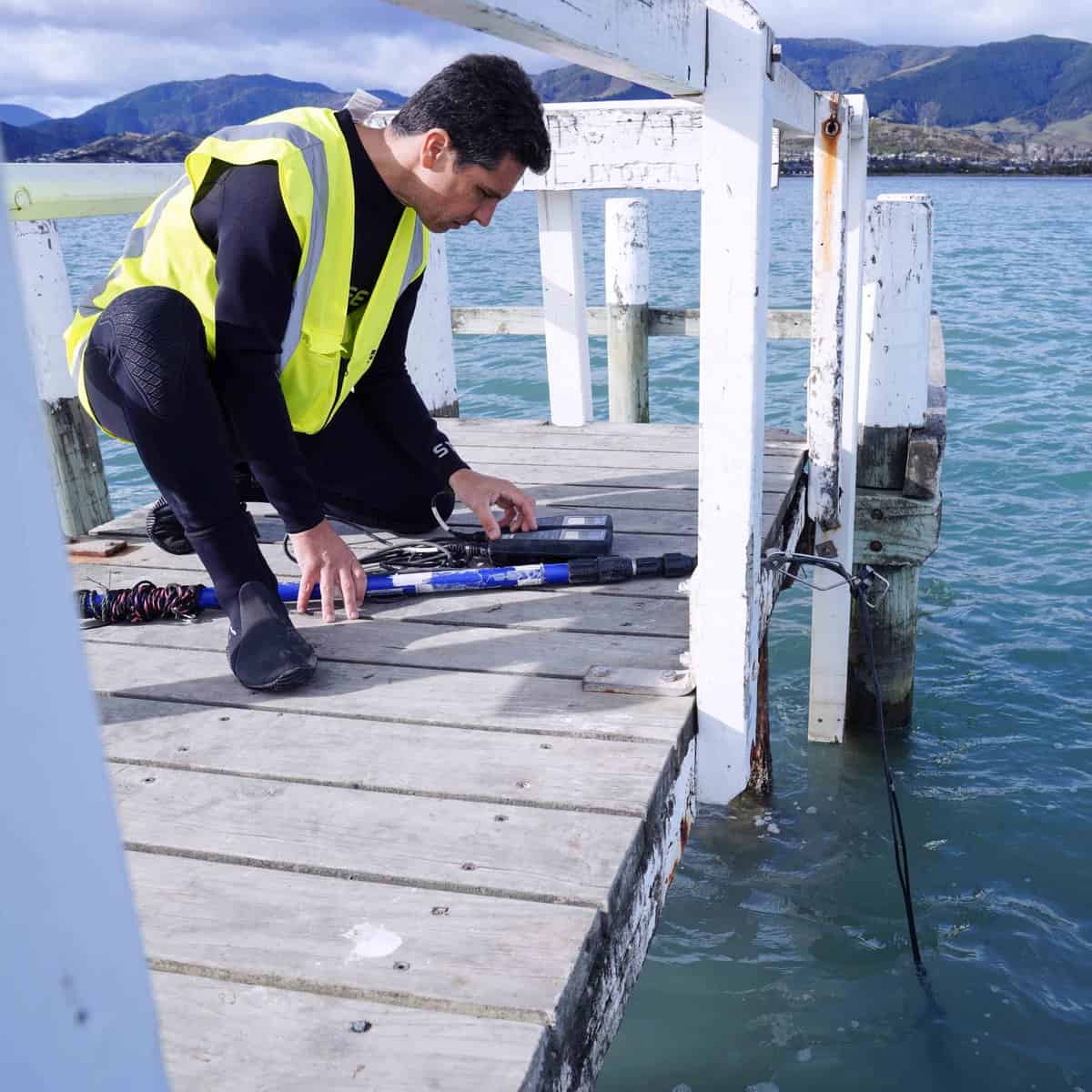Case Study: Otago Harbour microbial source tracking
Improving our understanding of intermittent contamination in shellfish growing waters to reduce harvest closures and keep consumers safe
October 2021
Introduction
Shellfish production is a central pillar of New Zealand’s aquaculture industry, and a key to its future growth. We have robust monitoring systems in place that protect public health and our international reputation for quality, and Cawthron Institute works closely with partners and industry to maintain uphold these high standards.
However, contamination incidents can still occur, and understanding how and why enables us to better prevent them from happening in future. This study in Otago Harbour funded through the Cawthron-led Seafood Safety Research Platform, aimed to generate relevant practical knowledge to assist the shellfish industry and MPI in managing microbial risks in shellfish growing areas vulnerable to intermittent contamination.
Microbial risks in shellfish growing areas
Bivalve Molluscan Shellfish including mussels, oysters, clams are nutritious foods and a good complement of a healthy diet. In their natural environment, these animals feed by pumping large volumes of water and filtering out plankton, detritus, etc. During this process, they may accumulate disease causing viruses and bacteria when the growing waters are contaminated with wastewater. To keep consumers safe, it is essential that shellfish harvested for human consumption is taken from contaminant free waters.
In Aotearoa New Zealand, most commercial shellfish growing areas are remote from large population centres and potential sources of pollution. Therefore, the quality of the shellfish is generally very good and most producers can sell live products without any post-harvest purification treatment. A small number of growing areas are occasionally affected by wastewater discharges from malfunctioning septic tanks and sewer overflows, or waste discharges from boats.
Although this risk is generally very well managed, in an ideal world there would be no incidents of contamination at all, and so seafood safety researchers, government and industry are eager to ensure every practicable step is taken to present the risk of contamination, and to reliably detect contamination when it occurs.
It’s also important to acknowledge that the marine environment is changing all the time, which affects the types of threats we face and the degree of risk they pose. Climate change will cause seas to warm, and an increase in heavy rain events, so it’s important that the research we do is helping to prepare New Zealand to mitigate and manage future threats.
How industry and government work together to keep shellfish safe to eat
The shellfish industry and Ministry for Primary Industry (MPI) currently undertake a shellfish sanitation programme to ensure that shellfish products meet the highest quality and safety standards.

Image: Drone footage of Cawthron Institute’s dye study in Otago Harbour.

Image: Cawthron Institute’s dye study in Otago Harbour
The programme has detailed requirements for all growing areas, irrespective of their vulnerability to contamination. All shellfish growing areas are periodically evaluated for the presence of pollution sources by monitoring indicator bacteria (Escherichia coli) and classified according to the level of E. Coli. Growing areas considered vulnerable to contamination from wastewater discharges have specific management plans with harvest criteria to ensure prompt notification when water/shellfish quality deteriorate. In the event of a pollution incident, illness outbreak or unexpected contamination with pathogens, the sanitation programme determines that the growing area be closed for at least 28 days from the end of the event. Decision to close an affected shellfish growing area lies with the local shellfish monitoring specialist.
In some circumstances, the specialist may advise a longer or shorter closure period. This is based on multiple lines of evidence (type of pollution incident, transport of contaminants in the growing area, health risk as judged by E. coli monitoring, etc). A matter of uncertainty relates to the differences in the way enteric viruses and E. coli behave in the environment – viruses are more resistant and episodic and therefore the numbers of E. coli in the waters or shellfish rarely correlate with the presence of enteric viruses.
Research to inform risk management and policy development
To address some of these uncertainties, Cawthron Institute, in collaboration with the Institute of Environmental Science and Research Ltd (ESR) and Southern Clams Ltd investigated the fate of enteric viruses in shellfish growing areas. Project lead Dr Carlos Campos, who was a senior coastal scientist at Cawthron Institute in 2021, said the research would help inform several operational and policy development areas, namely:
- Criteria for closure and re-opening of growing areas following pollution incidents
- Planning for pollution reduction
- Sampling protocols for monitoring viruses in the growing areas.
The research was co-funded by the Seafood Safety Research Platform, Southern Clams Ltd and New Zealand Food Safety Science and Research Centre. It sought to achieve four objectives:
- To quantify the time of travel, dispersion, and dilution of wastewater contamination in shellfish growing areas by means of tracer studies.
- To determine how wastewater dispersion and dilution relate to viruses and bacteria in the shellfish.
- To determine the relationships between viruses and microbial source tracking markers of wastewater/ human faecal contamination in shellfish.
- Based on the results of field studies, to develop a protocol for risk management of viral contamination in shellfish growing areas.
Dr Campos said Otago Harbour was selected as the study site for the practical aspects of the research.
“Otago Harbour offers excellent opportunities for sampling and has ideal characteristics to test the research hypotheses.”
Methods
Wastewater dispersion and dilution
To determine wastewater dispersion and dilution, a dye tracer and drogue tracking study was conducted in the harbour in February 2020. Eleven litres of dye were mixed with tap water and continuously released to the water column to simulate a small wastewater spill. Special devices called fluorometers were submerged at different points in the harbour to continuously monitor fluorescence before, during and after the dye release. On the day of the release, an additional fluorometer deployed over the side of a vessel was used to monitor the dye plume as it dispersed with the currents and tide. This fluorometer was linked to a portable PC and GPS to provide mapping of the dye plume in real-time.
The direction and speed of the dye plume were also determined using four self-logging GPS drogues which were released on the ebb tide at different points along the anticipated path of the plume. A drogue is a device that drifts with the water currents without being influenced by surface winds. It provides an indication of the direction and speed of water movement (and therefore wastewater effluent) from a discharge point. Aerial video recordings and photographs of the dye plume were taken using a drone.
Microbial monitoring
To study microbial contamination effects, samples of little neck clams were collected from nine sites in the harbour and sent to the laboratories for testing. At Cawthron, the samples were tested for E. coli and at ESR they were tested for human norovirus, FRNA Bacteriophage, crAssphage and pepper mild mottle virus. These viruses circulate in the community, are present in wastewater during those times and are good markers of wastewater/ human faecal contamination. Dr Campos says norovirus is responsible for most cases of shellfish-related illness worldwide.
Enteric viruses are those human viruses that are primarily transmitted by the faecal-oral route, either by person-to-person contact or by ingestion of contaminated food or water, although they may also be shed in vomitus.
Microbial source tracking (MST) is a term that covers a suite of tools and strategies for tracing the source of faecal contaminants in water. These tools and strategies are important because faecal contaminants spread bacteria and viruses that are often difficult to detect using traditional sampling methods that aren’t as sensitive or precise.

Image: Former Cawthron Institute scientist Dr Carlos Campos conducting water sampling in 2021.
“Fortunately, NZ growing areas have not been implicated in many norovirus outbreaks and few of these events have been linked to wastewater treatment plant discharges, and we would like to keep it that way.”
Samples were taken according to the procedure used in the official classification programme during normal conditions i.e., when the growing areas were open to commercial harvesting, and during 28-day closure periods following spill events.
Research relevance
Dr Campos said the research would generate relevant practical knowledge to assist the shellfish industry and MPI in managing microbial risks in shellfish growing areas vulnerable to intermittent contamination.
“One example is how it will help in the development of sampling procedures to proactively manage viral contamination risk in growing areas. This is timely because an increasing number of wastewater treatment plant discharges have consent requirements for virus monitoring.”
“This topic has been intensively studied in other major shellfish producing countries. In some cases, the research has led to significant improvements in shellfish sanitation programmes.”
Dr Campos said New Zealand has environmental conditions and regulatory requirements that present different challenges from those seen in other parts of the world (USA, Europe, China).
“It is important that NZ keeps abreast of the latest scientific developments in this area and has fit-for-purpose risk management protocols to ensure that our shellfish products maintain the highest levels of safety and quality.”
Further reading
- Campos CJA, Goblick G, Lee R, Wittamore K, Lees DN. 2017. Determining the zone of impact of norovirus contamination in shellfish production areas through microbiological monitoring and hydrographic analysis. Water Research 124: 556–565.
- FAO, WHO. 2018. Technical guidance for the development of the growing area aspects of bivalve mollusc sanitation programmes. Food Safety and Quality Series No. 5. Rome. 292 pp.
- Gyawali P, Devane M, Scholes P, Hewitt J. 2021. Application of crAssphage, F-RNA phage and pepper mild mottle virus as indicators of human faecal and norovirus contamination in shellfish. Science of the Total Environment 783: 146848.
- Hewitt J, King N, Cressey P, Perchec-Merien A-M. 2019. Risk profile update: norovirus in bivalve molluscan shellfish (raw). NZ Food Safety Technical Report No 2020/01.
- MPI 2021. Animal Products Notice: Regulated Control Scheme – Bivalve Molluscan Shellfish for Human Consumption. https://www.mpi.govt.nz/dmsdocument/30282-Animal-Products-Notice-Regulated-Control-Scheme-Bivalve-Molluscan-Shellfish-for-Human-Consumption-2018.